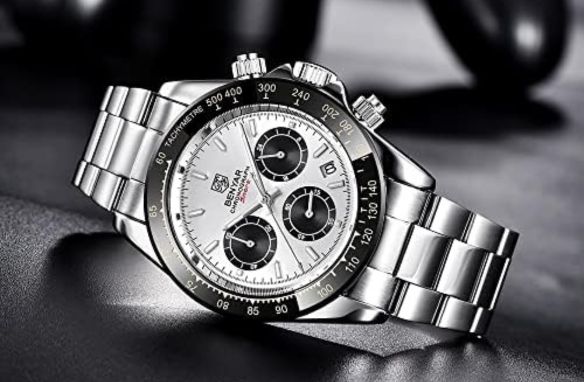Introduction
Watches are more than just accessories; they are marvels of engineering, each ticking with a unique heartbeat. Whether you’re a seasoned collector or a curious enthusiast, understanding the difference between quartz and mechanical movements is key to appreciating the intricate art of watchmaking. This guide delves into the mechanics behind these two types of watch movements, exploring their histories, how they work, and what makes each one special.
The Basics: What is a Watch Movement

- Description: The movement, or “caliber,” is the engine of a watch, responsible for keeping time and driving the hands around the dial. It’s the mechanism that powers all the functions of a watch, from simple timekeeping to complex complications.
- Types of Movements: Quartz and mechanical (which includes both manual and automatic movements).
Quartz Movement: Precision Through Technology

- History: Quartz technology revolutionized the watch industry in the 1970s, during what is known as the “Quartz Crisis,” where quartz watches became widely popular due to their accuracy and affordability.
- How It Works: Quartz watches are powered by a battery that sends an electric current through a small quartz crystal. The crystal oscillates at a precise frequency (usually 32,768 times per second), which is then converted into regular time intervals to move the watch hands.
- Advantages:
- Accuracy: Quartz watches are extremely accurate, often only deviating by a few seconds per month.
- Low Maintenance: They require minimal maintenance beyond battery replacement.
- Affordability: Generally more affordable than mechanical watches due to simpler construction.
- Popular Models: Seiko Astron, Casio G-Shock, and Timex Weekender.
Mechanical Movement: The Art of Timekeeping

- History: Mechanical watches have been around for centuries, representing the traditional craftsmanship and artistry of watchmaking. They are powered purely by mechanical components—no batteries involved.
- How It Works: A mechanical watch operates using a tightly wound spring called the mainspring, which gradually unwinds to release energy. This energy is transferred through a series of gears and springs to move the watch hands. Mechanical movements come in two forms:
- Manual Winding: Requires the wearer to manually wind the crown to tighten the mainspring.
- Automatic Winding: Uses a rotor that moves with the wearer’s wrist to automatically wind the mainspring.
- Advantages:
- Craftsmanship: Mechanical watches are admired for their intricate designs and the skill required to assemble them.
- Longevity: With proper care, a mechanical watch can last for generations.
- Aesthetics: The smooth, sweeping motion of the second hand and the visible movement of gears (in skeleton models) add to the allure.
- Popular Models: Rolex Submariner, Omega Speedmaster, and Patek Philippe Nautilus.
Quartz vs. Mechanical: Which is Right for You

- Consider Your Lifestyle: If you prioritize accuracy and low maintenance, a quartz watch might be the best fit. If you value craftsmanship, tradition, and the tactile experience of a timepiece, a mechanical watch is likely more your style.
- Budget Considerations: Quartz watches tend to be more budget-friendly, while mechanical watches can range from moderately priced to high-end luxury.
- Maintenance: Quartz watches require occasional battery changes, whereas mechanical watches need regular servicing to ensure they continue running smoothly.
The Hybrid Approach: Mecha-Quartz Movements

- Description: Mecha-quartz movements combine the best of both worlds, offering the accuracy of quartz with the tactile feel and complexity of mechanical chronograph functions.
- Popular Models: Seiko VK series, TAG Heuer Formula 1, and Breitling Aerospace.
The Emotional Connection: Why It Matters

- Description: Beyond the technical aspects, choosing between quartz and mechanical often comes down to the emotional connection you feel with your watch. Mechanical watches, in particular, are often seen as heirlooms, passed down through generations, with each tick representing a moment in time and a connection to the past.
- The Experience: Wearing a mechanical watch is like carrying a piece of history and art on your wrist, while a quartz watch offers peace of mind with its reliable precision.
Conclusion
Whether you’re drawn to the precision of quartz or the artistry of mechanical movements, understanding the heartbeat of your watch enhances your appreciation for this timeless accessory. Each type of movement has its own unique charm and purpose, catering to different tastes, lifestyles, and occasions. As you delve deeper into the world of horology, you’ll discover that the true beauty of a watch lies in both its function and its form.


